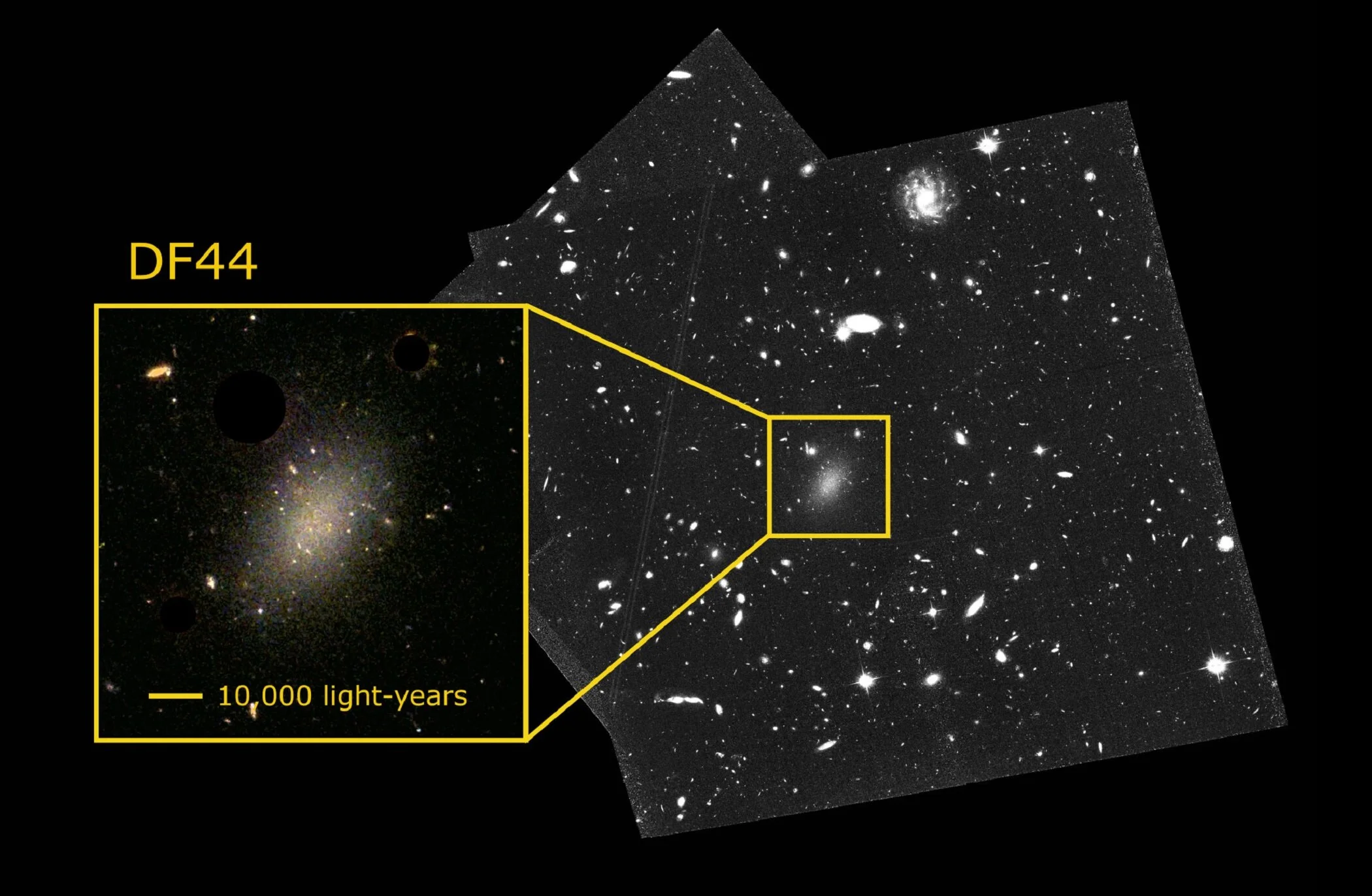After re-analyzing existing Hubble data, astronomers have determined that the extremely faint galaxy Dragonfly 44 has far fewer star clusters in its surrounding dark matter halo than reported previously
Hubble Space Telescope image of the ultra-diffuse galaxy Dragonfly44 (DF44). - Image Credit: T. Saifollahi and NASA / HST.
Because the number of globular clusters is a good indicator for the amount of dark matter, this so-called ultra-diffuse galaxy presumably is an ordinary dwarf galaxy, with the corresponding amount of dark matter, rather than a galaxy of Milky Way-like proportions that would consist almost entirely of dark matter as previously thought.
The research that preceded this adjustment, led by Groningen PhD candidate Teymoor Saifollahi, has been accepted for publication in Monthly Notices of the Royal Astronomical Society.
In 2015, astronomers at Yale University led by Dutch astronomer Pieter van Dokkum found several extremely faint galaxies in the Coma Cluster (a group of thousands of galaxies 300 million light-years from Earth in the constellation Haar of Berenice). The strange thing about these galaxies was that they occasionally appeared to be more massive than our Milky Way while producing 100 to 1000 times less light.
After more accurately measuring the mass of the largest galaxies, they were found to have an amount of dark matter that is considered to be normal in dwarf galaxies. However, the largest galaxy, Dragonfly 44 (DF44), remained an exception. The research group used different methods to determine the dark matter in DF44 in 2016 and 2017 and found an amount equal to that of the Milky Way. This would mean that DF44 was made up of 99.99% dark matter, while only one-hundredth of a percent of its mass came from visible stars. The team reached this conclusion based on the number of globular clusters around the galaxy, which determines the size of the dark matter halo.
In a new study, astronomers counted the number of globular clusters around DF44 more accurately and came to a much lower number. The new numbers implied a much lower mass and ten times less dark matter in DF44, an amount comparable to other dwarf galaxies.
Saifollahi stated that dragonfly44 was an outsider all these years that could not be explained with existing models for star formation. Nor could it be produced in cosmological simulations. Now we know that the result was wrong and that DF44 is a typical dwarf galaxy. It is likely that all ultra-diffuse galaxies are like this.
Sources and further reading:
FEATURED ARTICLES:
If you enjoy our selection of content please consider following Universal-Sci on social media


















